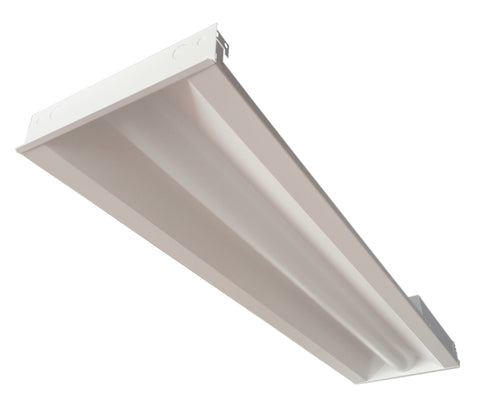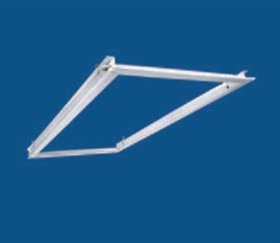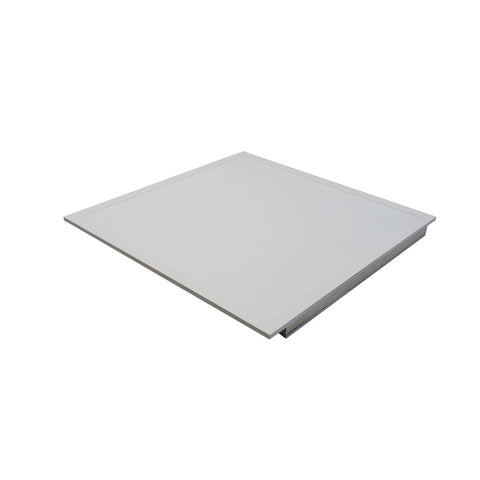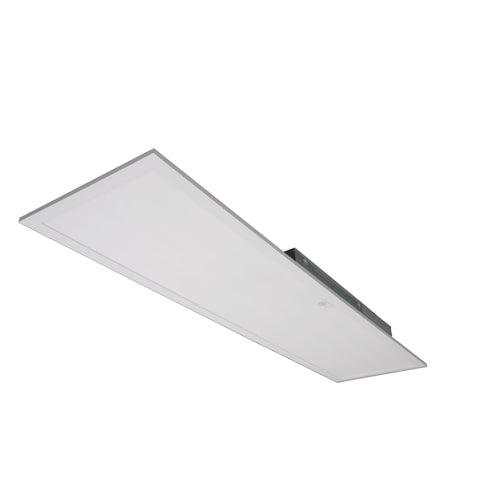Top 9 Tips for School and Classroom Lighting
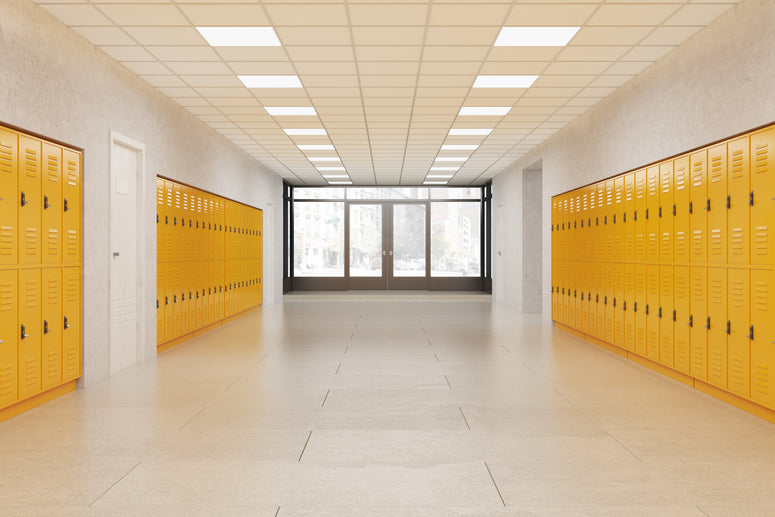
We all know the right lighting can enhance the ambiance at your favorite restaurant, brighten up a retail space, improve safety in a warehouse, and boost productivity in an open office.
But did you know the same logic applies to education environments?
Believe it or not, quality lighting can positively impact learning and scholastic achievement, too.
In addition, today’s light fixtures can reduce energy and maintenance costs. And since tax dollars are concerned, that’s an upgrade that can benefit everyone in the community.
If you are a decision-maker at a school district and are considering improvements to your lighting, we here at Warehouse Lighting are here to help.
To get things started, here’s a list of our top education lighting tips.
1. Upgrade to LED
If you’ve switched to LED light bulbs in your home, you were probably shocked (no pun intended) to notice that an LED replacement for a typical 60-watt incandescent bulb only uses about 9 watts of power. That’s a mere 15% of the power required to create the same lumen output.
And when compared to fluorescent lights, LEDs are typically 80% more efficient.
Now imagine that energy savings spread across the hundreds (or even thousands) of light fixtures found in a typical school.
In addition, a typical fluorescent bulb will last around 8,000 hours. By comparison, LED fluorescent fixtures and retrofit bulbs can last between 25,000 and 100,000 hours. This translates to a significant reduction in replacement costs as well as man-hours.
2. Leverage available natural light
Studies have shown that natural light enhances learning because it can help keep students alert. And of course, the more natural light you use, the lower your energy consumption.
Therefore, if a classroom, library, or other learning space has natural light sources, take advantage when you can. But also make sure the room has adequate electrical light options for rainy and overcast days, and of course for use in the evening.
3. Install occupancy sensors
It goes without saying that it’s a waste of electricity to illuminate an empty room.
Since students (and let’s face it, sometimes teachers) may occasionally forget to turn the lights off when they leave, an occupancy sensor will do it automatically.
In addition, occupancy sensors automatically turn lights on when someone enters a dark room. So, whether it’s a matter of someone not being able to locate the switch, or they’re holding a large stack of books and a cup of coffee, an occupancy sensor helps ensure no one has to fumble around in the dark and potentially trip over something.
4. Install off/on timers
In spaces that are constantly occupied during the day (such as libraries or common areas), an Off/On timer may be a better solution for lowering electric bills.
Specifically, an Off/On timer lets you program the hours you need a room to stay illuminated, and then shut lights off during hours when the room will remain unoccupied.
5. Choose the right color temperature
While a “warmer” color temperature may be appropriate for a dining or family room (or that favorite restaurant we mentioned earlier), they’re not ideal for education environments.
Believe it or not, a “cooler” and whiter color temperature can aid in alertness and concentration, and even help improve test scores. As such, we recommend staying in the 5000k to 6000k range when selecting light fixtures.
6. Consider color rendering indexes based on area
Ever noticed how it’s easier to tell colors apart when you expose them to natural light? Or have you ever held an article of clothing next to a window to see if it’s blue or black?
If so, you understand the importance of color rendering indexes. Simply put, a color rendering index is a measurement of a light source’s ability to faithfully reveal the true colors of an object.
In other words, a light source with a low CRI rating (typically 0 to 55) will make it difficult to tell colors apart. A light source in the “good” range (60 to 85) will make it much easier. And with a light source featuring an “excellent” CRI rating (90 to 100), you’ll have no trouble at all telling your blue socks apart from the black ones.
For context, daylight typically has a CRI of around 75.
Therefore, when choosing LED lighting for schools, consider the importance of color rendering. For example, this may not be an important attribute in a study hall. But in an art studio or perhaps a chemistry lab, it could be crucial to learning.
In these instances, we recommend selecting lighting with a CRI rating of 80 or higher.
7. Don't overlook exterior lighting
Thoughtfully-planned exterior lighting will not only improve the appearance of a school but can greatly enhance safety while helping to deter theft and vandalism.
When planning a lighting upgrade, make sure to think about walkways that are prone to winter ice, exterior walls, parking lots, and everywhere else where safety is of particular importance.
8. Definitely don't overlook emergency lighting
Like most public buildings, schools are subject to strict regulations pertaining to safety. This includes requirements for emergency backup and exit lighting.
Like all lighting, exit signs and emergency backup lights can wear out over time. In addition, modern LED versions last longer and use less electricity.
A refresh of your emergency and exit lighting can save your school money in the long run – and more importantly – best ensure students can find the exits in the event of a power outage or other situation.
9. Perform a lighting audit
A lighting audit entails a thorough assessment of the lighting you currently have, determining the lighting you need, and formulating a plan.
During the audit, you’ll note what lights you can keep, which will need an update (like an LED retrofit), and which lights need replacement. In addition to lights, you’ll also want to look at switches, perhaps wiring, opportunities for occupancy sensors and Off/On timers, and more.
While this may seem like a lot of work on the front end, it can help ensure you don’t install more lighting you need (potentially wasting money and electricity) or invest in a system that doesn’t meet your needs.
Fortunately, the lighting pros at Warehouse Lighting have the knowledge and experience to walk you through the process and help you select the perfect lighting solution for your school’s unique needs. Give us a call at 888-454-4480 or visit our Contact Us page.
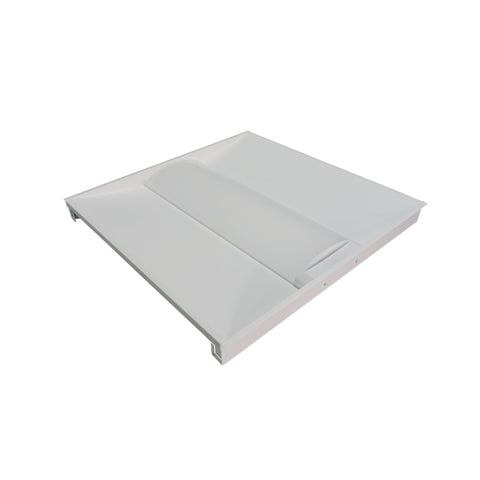
2 x 2 Foot Concord G4 LED Center Basket Troffer, 4400 Lumens, Wattage and CCT Selectable, 0-10 Dim Option, 120-277V
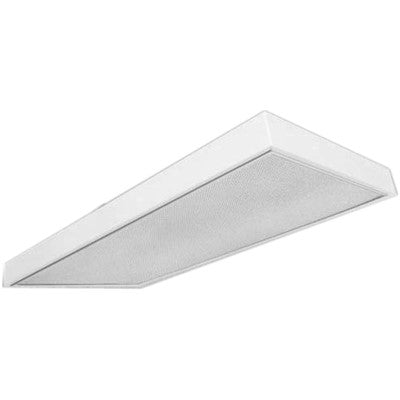
1 x 4 Foot 2 Lamp 32 Watt T8 Surface Mount Troffer, No Reflector, 120-277 Universal
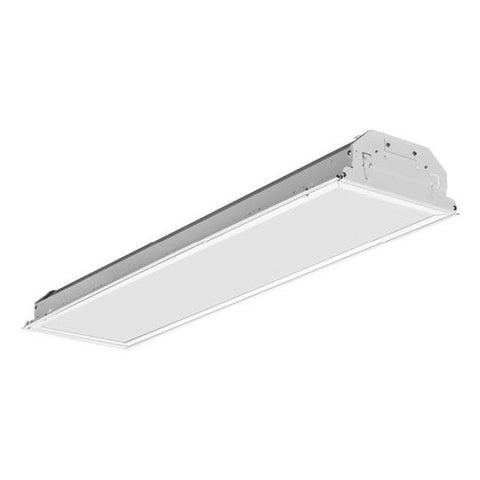
LED Troffer and drop ceiling lighting in all sizes: 1 x 4, 2 x 2, and 2 x 4. We offer a premium troffer with long warranties and variety of designs and styles at competitive pricing. Big discounts and FREE shipping on qualified purchases.
View (112) Products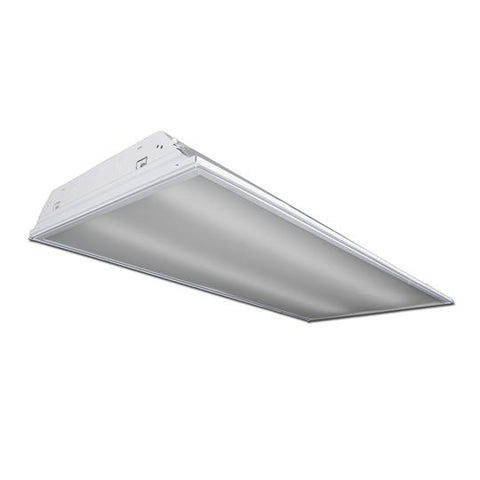
Shop our collection of fluorescent troffer lights at Warehouse-Lighting.com. We offer fluorescent troffers in a wide range of different sizes and styles to fit any workspace or office lighting need. Order your troffer fluorescent light fixtures from Warehouse Lighting online today.
View (2) Products
Buy LED flat panel lights at Warehouse-Lighting.com. Our flat ceiling lights use less space and illuminate commercial indoor spaces with warm bright lighting and a sleek, modern look. Order LED light panels online today.
View (85) Products High Bay LED Lighting
High Bay LED Lighting
 Industrial Low Bay Lighting
Industrial Low Bay Lighting
 Industrial Strip Lights
Industrial Strip Lights
 Vapor Tight Lighting
Vapor Tight Lighting
 LED Shop Lights
LED Shop Lights
 Hazardous Area / Explosion Proof Lighting
Hazardous Area / Explosion Proof Lighting
 Loading Dock Lights
Loading Dock Lights
 Construction / Portable Lighting
Construction / Portable Lighting
 Industrial Ceiling Fans
Industrial Ceiling Fans
 LED Work Lights
LED Work Lights
 Clearance
Clearance
 Troffer Lights
Troffer Lights
 LED Flat Panel Lights
LED Flat Panel Lights
 Drop Ceiling Lights
Drop Ceiling Lights
 Suspended LED Lights
Suspended LED Lights
 Exit / Emergency
Exit / Emergency
 Wrap Lighting Fixtures
Wrap Lighting Fixtures
 Gooseneck and Barn Lights
Gooseneck and Barn Lights
 Commercial Stairway Lighting
Commercial Stairway Lighting
 Hospital Bed Lights
Hospital Bed Lights
 Commercial Sign Lights
Commercial Sign Lights
 UV Disinfecting Lights & Air Purifier Fixtures
UV Disinfecting Lights & Air Purifier Fixtures
 Recessed Lighting
Recessed Lighting
 Wafer Lighting
Wafer Lighting
 RGB LED Lights
RGB LED Lights
 Grow Lights
Grow Lights
 Refrigeration Lighting
Refrigeration Lighting
 LED Flood Lights
LED Flood Lights
 Outdoor Wall Lights
Outdoor Wall Lights
 LED Area Lights
LED Area Lights
 Parking Lot Lights & Poles
Parking Lot Lights & Poles
 Outdoor Post Top Lights
Outdoor Post Top Lights
 LED Stadium Lighting
LED Stadium Lighting
 Canopy Lights
Canopy Lights
 Security Lights
Security Lights
 LED Bollard Lights
LED Bollard Lights
 Solar Powered LED Lighting
Solar Powered LED Lighting
 Dusk to Dawn Lights
Dusk to Dawn Lights
 Landscape Lighting
Landscape Lighting
 Outdoor String Lights
Outdoor String Lights
 Coastal Wildlife Lighting
Coastal Wildlife Lighting
 Outdoor House Lights
Outdoor House Lights
 Ceiling Fans
Ceiling Fans
 Ceiling Lights
Ceiling Lights
 Chandelier Lights
Chandelier Lights
 Pendant Lighting
Pendant Lighting
 Island Lights
Island Lights
 Track Lighting
Track Lighting
 Under Cabinet Lighting
Under Cabinet Lighting
 Vanity Lights
Vanity Lights
 Wall Sconces
Wall Sconces
 LED Tape Lights
LED Tape Lights
 LED Light Bulbs
LED Light Bulbs
 LED Tube Lights
LED Tube Lights
 LED Corn Lights
LED Corn Lights
 Vintage LED Bulbs
Vintage LED Bulbs
 Decorative LED Bulbs
Decorative LED Bulbs
 Fluorescent Light Bulbs
Fluorescent Light Bulbs
 Metal Halide Lamps
Metal Halide Lamps
 Shatterproof Light Bulbs
Shatterproof Light Bulbs
 LED Magnetic Strip Retrofit Kits
LED Magnetic Strip Retrofit Kits
 LED Strip Light Retrofit Kits
LED Strip Light Retrofit Kits
 High Bay LED Retrofit Kits
High Bay LED Retrofit Kits
 LED Troffer Retrofit Kits
LED Troffer Retrofit Kits
 LED Wall Pack Retrofit
LED Wall Pack Retrofit
 LED Street Light Retrofit Kits
LED Street Light Retrofit Kits
 Recessed Lighting LED Retrofit Kits
Recessed Lighting LED Retrofit Kits
 CFL Ballasts
CFL Ballasts
 Electronic Halide Ballast
Electronic Halide Ballast
 Emergency Ballasts & Inverters
Emergency Ballasts & Inverters
 Fluorescent Ballasts
Fluorescent Ballasts
 LED Drivers
LED Drivers
 High Pressure Sodium Ballasts
High Pressure Sodium Ballasts
 Metal Halide (HID) Ballasts
Metal Halide (HID) Ballasts
 Pulse Start Metal Halide Ballasts
Pulse Start Metal Halide Ballasts
 Electric Vehicle Chargers
Electric Vehicle Chargers
 Electrical Supplies
Electrical Supplies
 Electrical Tools
Electrical Tools
 Ballasts & Drivers
Ballasts & Drivers
 Switches & Receptacles
Switches & Receptacles
 Hand Dryers
Hand Dryers
 Electrical Power Cords
Electrical Power Cords
 Sensors and Timers
Sensors and Timers
 Smart Home Automation
Smart Home Automation
 High Bay Occupancy Sensors
High Bay Occupancy Sensors
 Outdoor Motion Sensor Lights
Outdoor Motion Sensor Lights
 Walkway Lights
Walkway Lights
 Office Lights
Office Lights
 Gym Lighting
Gym Lighting
 Exterior Building Lights
Exterior Building Lights
 Sports Lighting
Sports Lighting
 Hospital Lights
Hospital Lights
 Airport Lights
Airport Lights
 Classroom Lights
Classroom Lights
 Factory Lights
Factory Lights
 Restaurant Lights
Restaurant Lights
 Corridor Lights
Corridor Lights
 Church Lights
Church Lights


